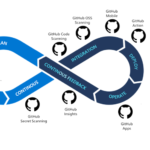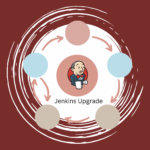The Great Migration Dilemma
Imagine you are tasked with moving not one, but a hundred projects from Azure DevOps (ADO) to GitHub Actions. It’s a scenario many modern DevOps teams face as organizations consolidate tooling and seek the flexibility and ecosystem advantages of GitHub Actions. But how do you scale this migration without losing your mind—or your CI/CD reliability?
In this expert guide, we’ll break down the core concepts, compare migration approaches, walk through a real-world Python project example, provide a detailed checklist, and share actionable advice for a smooth, scalable migration. Whether you’re a DevOps lead, engineer, or IT manager, you’ll find practical steps and strategic guidance to ensure your migration is a success.
Key Concepts & Trends in CI/CD Migration
- CI/CD Pipelines: Both Azure DevOps and GitHub Actions use YAML-based configuration, but their syntax and ecosystem differ. GitHub Actions emphasizes reusable workflows and a vast marketplace of community actions.
- Automation & Scale: Migrating a handful of pipelines can be done manually, but at scale (20, 50, or 100+), automation is critical to avoid human error and bottlenecks.
- Auditability & Testing: Modern migration tools offer “dry run” and audit capabilities, letting you preview migrations and catch issues before production cutover.
- Incremental vs. Big Bang: You can migrate all projects at once (“big bang”) or incrementally, reducing risk but requiring dual maintenance for a period.
Approaches to Migration: Manual vs. Automated vs. Hybrid
| Approach | Best For | Pros | Cons |
|---|---|---|---|
| Manual | Simple pipelines, few projects |
|
|
| Automated (GitHub Actions Importer) | Large-scale migrations (20+ projects) |
|
|
| Hybrid | Complex environments with custom tasks |
|
|
Recommendation: For migrating 100 projects, use the GitHub Actions Importer for automation, with manual/hybrid intervention for pipelines with custom or unsupported tasks.
Step-by-Step: Automated Migration Using GitHub Actions Importer
The GitHub Actions Importer is the recommended tool for automating Azure DevOps to GitHub Actions migrations at scale. It supports audit, dry-run, and production migration modes, and can be extended for custom needs.
Prerequisites
- Azure DevOps account with access to all projects/pipelines
- GitHub account with admin rights on target repositories
- Personal Access Tokens (PAT) for both Azure DevOps and GitHub
- Environment with Docker and GitHub CLI installed
Installation & Setup
-
Install GitHub CLI:
sudo apt install gh -y -
Install Docker:
sudo apt install docker-ce docker-ce-cli containerd.io -
Install GitHub Actions Importer extension:
gh extension install github/gh-actions-importer -
Configure credentials:
Generate PATs for Azure DevOps and GitHub with required scopes.
gh actions-importer configure -
Update Importer (recommended):
gh actions-importer update
Audit and Dry Run
-
Audit pipelines:
gh actions-importer audit azure-devops --output-dir tmp/audit
Review the output to identify any pipelines that may need manual intervention. -
Dry run a migration:
gh actions-importer dry-run azure-devops pipeline --pipeline-id <id> --output-dir tmp/dry-run
This generates the GitHub Actions workflow YAML without making changes.
Production Migration
-
Migrate a pipeline:
gh actions-importer migrate azure-devops pipeline --pipeline-id <id> --target-url https://github.com/your-org/your-repo --output-dir tmp/migrate
This creates a pull request in the target GitHub repository with the converted workflow. -
Review and merge:
Review the pull request, address any manual steps listed, and merge when ready.
Scaling Up: Migrating 100 Projects
- Script the migration process to loop over all pipeline IDs and repositories.
- Use the audit and dry-run outputs to prioritize manual review for complex pipelines.
- Batch migrations by project type or complexity to streamline review and testing.
Real-World Example: Migrating a Python Project
Azure DevOps Pipeline YAML (Sample)
trigger:
- main
pool:
vmImage: 'ubuntu-latest'
steps:
- task: UsePythonVersion@0
inputs:
versionSpec: '3.x'
- script: pip install -r requirements.txt
- script: pytest tests/
Equivalent GitHub Actions Workflow
name: CI
on:
push:
branches: [main]
jobs:
build:
runs-on: ubuntu-latest
steps:
- uses: actions/checkout@v4
- name: Set up Python
uses: actions/setup-python@v5
with:
python-version: '3.x'
- name: Install dependencies
run: pip install -r requirements.txt
- name: Run tests
run: pytest tests/
Tip: After migration, test the workflow thoroughly and compare results to the original Azure DevOps pipeline.
Detailed Checklist for Migration
- Inventory all Azure DevOps projects and pipelines
- Identify dependencies, secrets, and service connections used in pipelines
- Generate and securely store PATs for both platforms
- Install and configure GitHub CLI, Docker, and Actions Importer
- Run
auditanddry-runfor all pipelines - Document manual steps required (secrets, service connections, custom tasks)
- Automate migration for pipelines with high audit success
- Review pull requests for each migrated workflow
- Test migrated workflows in GitHub Actions
- Decommission Azure DevOps pipelines after successful migration
- Communicate changes to teams and update documentation
Latest Tools, Technologies, and Frameworks
- GitHub Actions Importer: Official CLI extension for automated migration (supports audit, dry-run, migrate, and extensibility via custom transformers).
- ADO2GH Extension: For repository migration with history and branch policies (useful for codebase migration, not just pipelines).
- AzurePipelinesToGitHubActionsConverter: Community tool and web interface for YAML translation, useful for manual migration or troubleshooting.
- PowerShell Scripts: For migrating work items (issues, bugs, tasks) from Azure DevOps to GitHub Issues.
Challenges and Solutions
- Unsupported Tasks: Some Azure DevOps tasks (e.g., pre/post-deployment gates) are not supported by GitHub Actions Importer.
Solution: Migrate these steps manually and document any workflow changes. - Secrets and Service Connections: These must be recreated in GitHub Actions as repository or organization secrets.
Solution: Use the manual steps list in the migration PR to track and configure secrets. - Custom Build Agents: Azure DevOps self-hosted agents need to be mapped to GitHub self-hosted runners.
Solution: Register runners in GitHub and update workflow YAML accordingly. - Path Differences: File path conventions may differ between platforms.
Solution: Use custom transformers or adjust paths manually post-migration. - Dual Maintenance: Running both systems during migration can be cumbersome.
Solution: Batch migrations and minimize the overlap period.
Future Outlook and Emerging Trends
- Increasing Automation: Migration tooling is becoming more sophisticated, with higher conversion rates and better error reporting.
- Ecosystem Integration: GitHub Actions continues to expand its marketplace, making it easier to find reusable actions for complex workflows.
- AI-Assisted Migration: Expect future tools to leverage AI to suggest or auto-fix migration issues.
- Hybrid Cloud and Multi-Repo Strategies: As organizations adopt multi-cloud and mono-repo strategies, migration tools will adapt to handle more complex scenarios.
Real-World Examples
- Example 1: Amit Maheshwari’s migration of multiple pipelines using GitHub Actions Importer—demonstrates step-by-step CLI usage for a successful migration.
- Example 2: Oksala.net’s blog—shows how to automate bulk migrations and handle manual tweaks via pull requests.
- Example 3: AzurePipelinesToGitHubActionsConverter—a community tool for YAML translation, useful for troubleshooting or manual migration.
Key Takeaways
- Automated tools like GitHub Actions Importer are essential for large-scale migrations.
- Audit and dry-run features help catch issues early and reduce risk.
- Be prepared for manual intervention for secrets, service connections, and custom tasks.
- Plan, communicate, and document every step for a seamless migration experience.
References & Further Reading
- GitHub Docs: Migrating from Azure DevOps with GitHub Actions Importer
- Migration from Azure DevOps to GitHub Actions (DevOps.Dev)
- How to Migrate from Azure DevOps Pipelines into GitHub Actions (Oksala.net)
- AzurePipelinesToGitHubActionsConverter
- GitHub Docs: Migrating from Azure Pipelines to GitHub Actions
- SharePoint Europe: How to Migrate from Azure DevOps Pipelines into GitHub Actions
- Microsoft Docs: Create a PAT in Azure DevOps
- GitHub Docs: Creating a Personal Access Token
- Book: Learning DevOps: Continuously Deliver Better Software by Mikael Krief
- Book: The DevOps Handbook by Gene Kim, Jez Humble, Patrick Debois, John Willis
Ready to modernize your CI/CD and migrate at scale? Contact our experts for a tailored migration strategy: https://stonetusker.com/contact-us/



